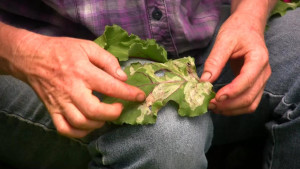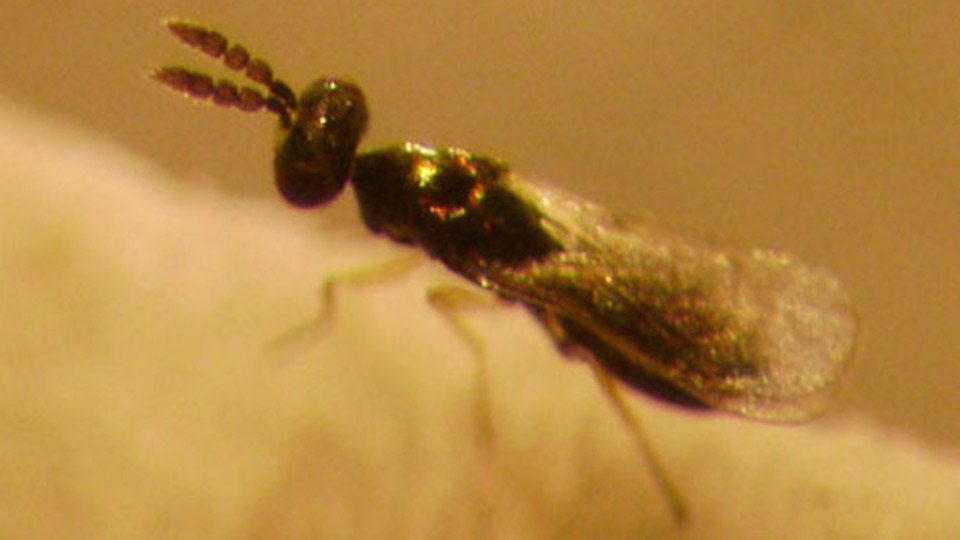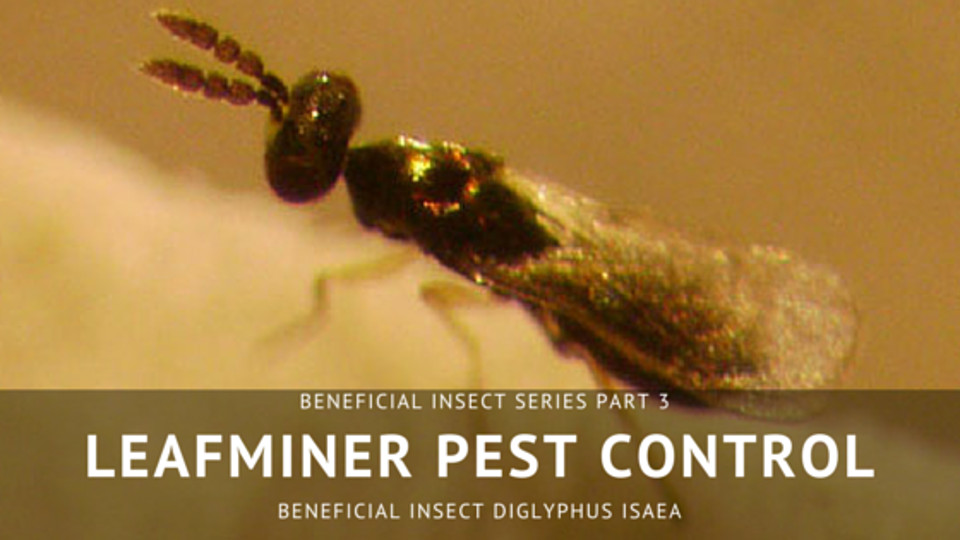These organic leafminer control methods fulfills the High Performance Garden Characteristic #1 In Harmony with Nature. The leafminer is a pest that can take over your spinach, swiss chard and beet leaves. These 3 easy methods for control will help you to keep this pest out of your garden totally organically. Are you ready? Come and join me in one of my greens growing greenhouses to discover how to take care of these difficult pests!
Organic Leafminer Control

Leafminer Damage
The Beet Leafminer, Pegomya hyoscyami is a major pest for spinach, beets and swiss chard. The leafminer lives in-between the top and the bottom of the leaf layers and is very hard to kill with any sprays or powders organic or not. The adult is a grey fly that lays its eggs on the underside of the leaves. These eggs hatch out in 4-6 days and the larva bores its way in to the center of the leaf where it is safe from predators and insecticides. The larva live in the leaf for about 2 weeks then they drop to the ground and pupate. They can also pupate in the leaves. The adult fly emerges in 2-4 weeks and starts the cycle over again.
3 Organic Leafminer Control Methods
1. Look for and destroy the eggs and remove the leaves that have damage.
2. You can apply several treatments of Spinosad. (Warning: for the Spinosad to work the leafminer must ingest the pesticide. If they never eat at the surface of the leaf they will not come in contact with this organic pesticide.)
3. Use a parasitic wasp that is a predator of the leafminer.
 Diglyphus Isaea
Diglyphus Isaea
The Diglyphus is a natural predator of the leafminer larva. This parasitic wasp is only 2 mm long and has no ability to sting us. The adult wasp will hunt down a larva in the mine tube and it will kill it and lay an egg next to it. This egg hatches out after 16 days and it will consume the leafminer larva. Then the Diglyphus wasp will emerge and hunt down more leaf minor. An adult diglyphus can parasitize up to 300 leaf minor in its 4 week life. This wasp is most active when the average temperature ranges between 60-90- deg F.
I order and release the parasitic wasps in June when it feels like summer and after I have seen some damaged leaves. There has to be some leafminer larva for the wasp to parasitize or there is no host for the eggs. I always order my beneficial insects from Hydro-Gardens in Colorado Springs.
What pests are you battling in your garden? What organic measures have you used? Tell me in the comments below or send me a question via email. I would love to hear from you! Do you know of another gardener who is struggling with their garden? Invite them into the High Performance Garden Community so they can get the support they need to succeed!
Until the next training video, may your garden be easy, fun, productive and always organic,
Lynn
Email me any questions you have about parasitic wasps or leafminer control. Taking control of your garden organically is possible with the right set of skills.









Hi
Can I get these beneficial insects to solve problem of leaf minerin green house Cucumbers
I use the leaf miner to stop damage in my greenhouses on my beets and swiss chard. If you contact Hydro Gardens they can tell you all the leaf miner damage that their particular strain of beneficial insect controls. http://www.hydro-gardens.com
Are the wasps effective with birch (tree) leafminers?
I am not sure. You would have to ask the company that you are purchasing them from.